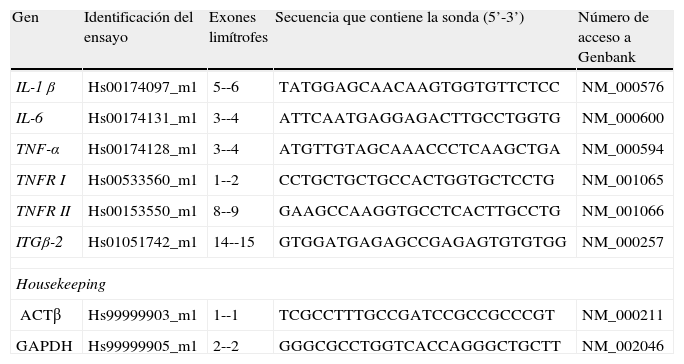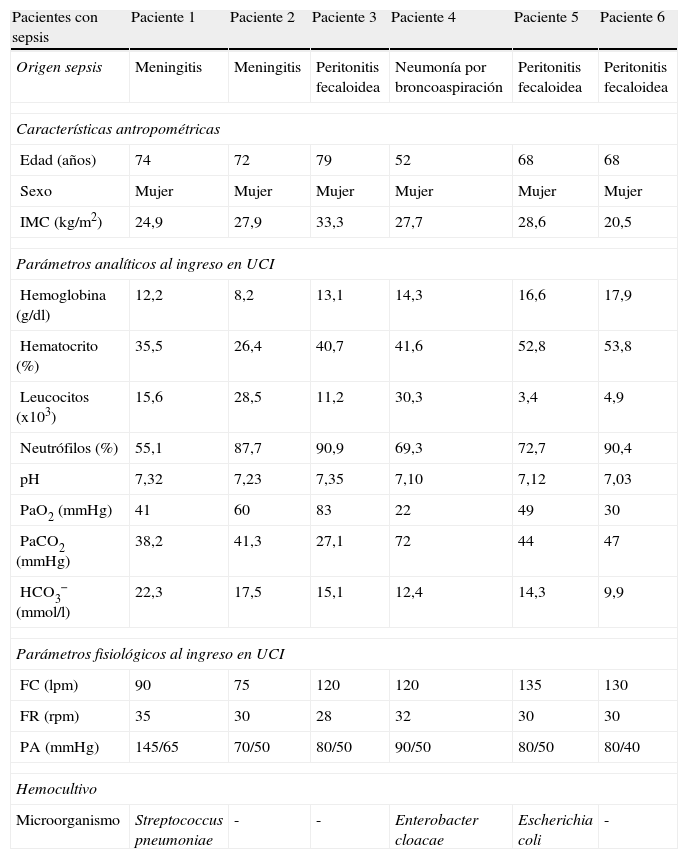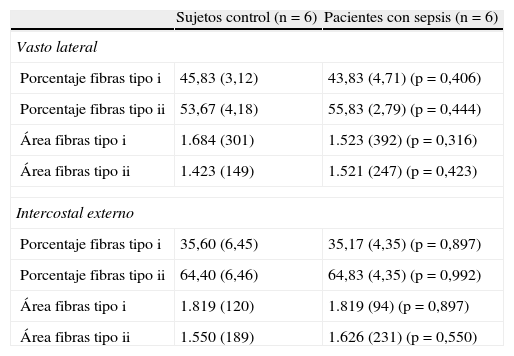El estrés oxidativo y la inflamación contribuyen al deterioro de la función contráctil del diafragma observado en modelos animales de sepsis y endotoxemia. En los pacientes con sepsis, no se han evaluado nunca episodios moleculares en sus músculos respiratorios. En este estudio se evaluaron los niveles de estrés oxidativo e inflamación en un músculo respiratorio, el intercostal externo, y de las extremidades, el vasto lateral, de pacientes con sepsis.
Pacientes y métodoEn el intercostal externo y vasto lateral de pacientes con sepsis grave y/o shock séptico se determinaron valores de proteínas oxidadas y nitradas, aductos proteicos de malondialdehído y de hidroxinonenal, enzimas antioxidantes catalasa y Mn-superóxido dismutasa, tumor necrosis factor (TNF, «factor de necrosis tumoral»)-α, receptores i y ii del TNF-α, interleucina (IL)-1 e IL-6, marcador panleucocitario CD18, y composición fibrilar mediante Western blot, reacción en cadena de la polimerasa, e inmunohistoquímica.
ResultadosRespecto de los controles, en los pacientes con sepsis, los niveles de proteínas oxidadas y nitradas estaban aumentados en el vasto lateral, pero no en el intercostal externo, los de enzimas antioxidantes no difirieron, los de citocinas inflamatorias fueron superiores en ambos músculos, y los porcentajes y tamaños de las fibras musculares no mostraron diferencias para ningún músculo entre ambos grupos.
ConclusionesEn pacientes con sepsis grave incipiente, la distinta actividad de los músculos respiratorios y de las extremidades puede explicar el patrón diferencial de estrés oxidativo e inflamación observado en los mismos. Estos hallazgos podrían tener implicaciones importantes para el manejo clínico y terapéutico de estos pacientes.
Oxidative stress and inflammation contribute to the diaphragm contractile dysfunction observed in animal models of sepsis and endotoxemia. In septic patients, molecular events have never been explored in their respiratory muscles. Levels of oxidative stress and inflammation were evaluated in a respiratory muscle, the external intercostal, and a limb muscle, the vastus lateralis, of patients with sepsis.
Patients and methodsLevels of oxidized and nitrated proteins, protein adducts of malondialdehyde and hydroxinonenal, antioxidant enzymes catalase and Mn-superoxide dismutase, tumor necrosis factor (TNF)-α, TNF-α receptors i and ii, interleukin (IL)-1 and IL-6, the panleukocyte marker CD18, and fiber type composition were explored using immunoblotting, real time-polymerase chain reaction, and immunohistochemistry in the external intercostal and vastus lateralis of patients with severe sepsis and/or septic shock.
ResultsCompared to the controls, in septic patients, levels of oxidized and nitrated proteins were increased in the vastus lateralis, but not in the external intercostal, while those of the antioxidant enzymes did not differ, and the proportions and sizes of the muscle fibers were not significantly different in any muscle between patients and controls.
ConclusionsDifferences in activity between the respiratory and limb muscles may account for the differential pattern of oxidative stress and inflammation observed among patients with severe sepsis. These findings may have relevant implications for the clinical and therapeutic management of these patients.
Artículo
Comprando el artículo el PDF del mismo podrá ser descargado
Precio 19,34 €
Comprar ahora












